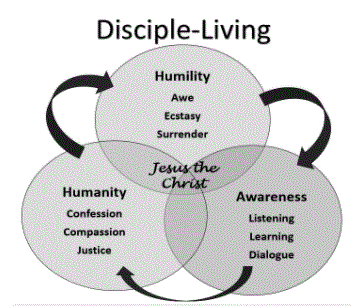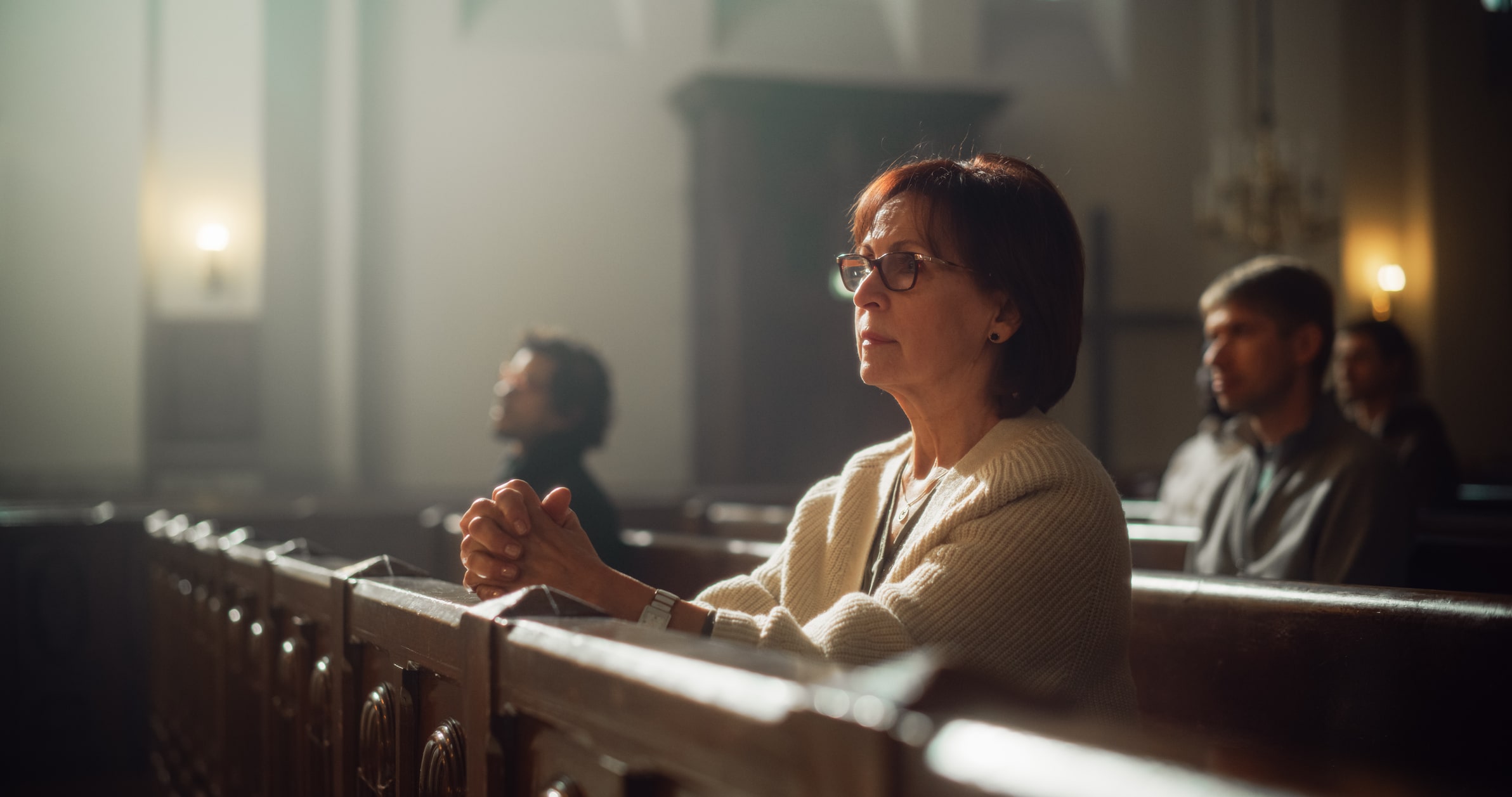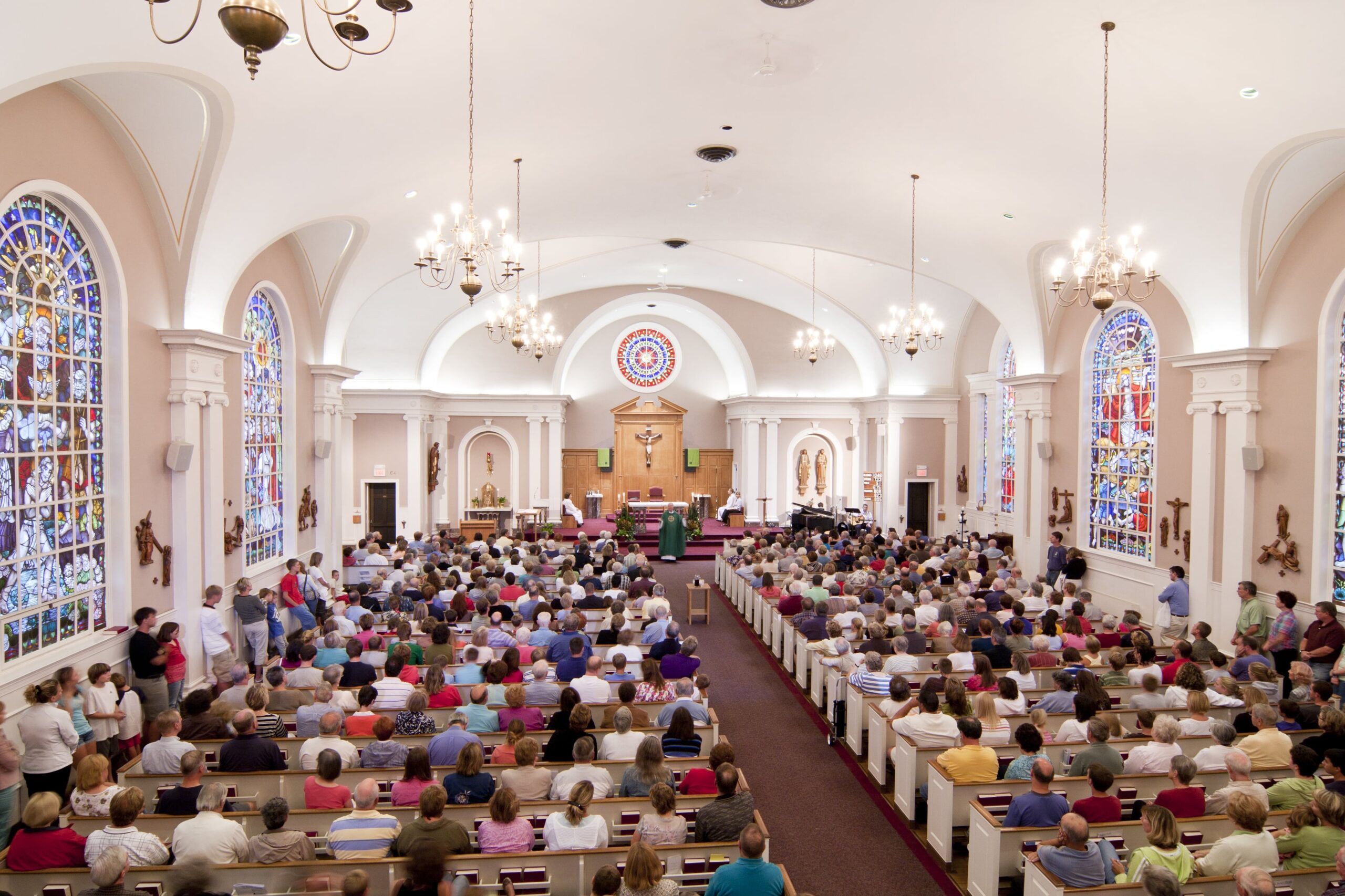Small Groups Whitepaper
Why is Small Group Ministry Important?
Many emerging lifestyle segments prefer the intimacy, flexibility, & variety of small groups to traditional large groups based on gender or age. Many families with children prefer the informal, conversational, action-reflection learning strategy of small groups to traditional Sunday school classes. MissionInsite helps you understand small group preferences.
Preparation
There are three things required for the effective use of all MissionInsite resources. This preparation will help you maximize the potential for both church growth and mission impact in your neighborhood, community, or region.
First, you must create your church account and identify the administrator so that you can create your own customized maps. (Within MissionInsite download the PDF “How to Register Information Handout” by clicking the “Helps” tab on the bottom toolbar).
Second, you must upload your database of resident members and active adherents in the search engine to create a “People Plot”. Use the videos provided by MissionInsite to guide you. Member and adherent households will appear as red dots in the map. ( Within MissionInsite click the “Helps” tab in the bottom toolbar and look under the “Overview Videos” to learn how to do it.)
Third, you must create a “Shape” to define the geography of your research. This shape should include the majority of member and adherent households on the map. You can create this shape by radius or travel polygon, but for this resource it is best to draw the shape freehand. (See options for defining search areas by clicking the “Shapes” tab on the bottom toolbar within MissionInsite .)
Necessary Tools:
Assemble the following tools to use as you follow the steps for developing small groups:
- MissionImpact Mosaic Application Guide by Bandy
( Within MissionInsite click the “Helps” tab in the bottom toolbar and look under “Documents”)
- ExecutiveInsite Report
- MinistryInsite Report
- MinistryInsite Priorities Report
- ReligiousInsite Report
- ComparativeInsite Report
(Click the “Demographics” tab in the bottom toolbar and print each report from the “Predefined Reports” list.)
Key Information about Small Group Design
What is a Small Group?
A small group consists of 3-12 people, who share an interest or need, and meet at convenient times and locations for authentic friendship and holistic personal growth. Each small group can shape its meeting in any way that works, but the following will always be true:
- Affinity is the bond. This is the shared enthusiasm that motivates people to participate.
- Growth is the agenda. Leaders guide twin process for intimacy and faith formation.
- God is the focus. People participate who are seeking spiritual growth.
- Trust is the culture. Leaders model and embed the core values and bedrock beliefs of the church.
Small Group Purpose
The primary purpose of a Small Group is to grow friendship and faith. We want to grow people up … and not to get tasks done. It is primarily about spiritual maturity … and only secondarily about office holding, fundraising, or membership. Evaluate success in three ways:
- Are individual participants growing?
- Are healthy relationships deepening?
- Are participants getting closer and closer to Christ?
Small Group Structure
Regardless of topic or timetable, all small groups follow the same pattern:
Prayer: Small groups are committed to intercessory prayer for members, seekers and ministries;
Action: Small groups are committed to some activity that is a shared enthusiasm;
Learn: Small groups are constantly learning about themselves, God, and God’s mission;
Share: Small groups are bonding intimately with one another in mutual support.
Small Group Process
The Small Group experience involves two “flows” of interaction. The pastor can help group leaders anticipate and navigate through potential obstacles to personal and spiritual growth. Emphasis varies from group to group.

We will return to these pyramids for building relationships and growing faith later in this workbook. Every small group should have a time for closure. Groups that continue without forever often artificially limit potential to develop new relationships and encourage complacency in faith.
Building Small Groups
The following steps will help you choose the options that are most relevant to the ministry expectations of the largest Lifestyle Segments in your surrounding neighborhood, community, or region … and expectations most relevant to current members and adherents in your church.
Step 1: Exploring Community Expectations
Review Page 13 of the predefined ExecutiveInsite Report you downloaded for your search area. The chart lists the Lifestyle Segments in the surrounding community in order (from largest to smallest). Identify the Lifestyle Segments that comprise the top 50-60% of community representation.
Examine the index for the “MissionImpact Mosaic Application Guide.” Click the hyperlinks for each of these largest Lifestyle Segments, and print the ministry expectation summaries for each one.
Scroll down to the “Small Group” preferences description for each Lifestyle segment. You will see several options, along with a brief description of expectations for each Lifestyle Segment. *Note: that the expectations for each Lifestyle Segment may be different!
Step 2: Exploring Church Potentials
Review Page 5 of the predefined ComparativeInsite Report you downloaded for your search area. The chart compares the Lifestyle Segments in the surrounding community in order (from largest to smallest) … to the Lifestyle Segments currently represented in the church. Note the Lifestsyle Segments that comprise top 50-60% of community representation and of church representation.
Return to the “MissionImpact Mosaic Application Guide” and print the descriptions of any additional Lifestyle Segments over-represented in the church as compared to the community.
In the example here, the top community segments are circled (about 66.2%) and the top church segments are identified by arrows (about 88.0%). Note the contrasting representations between community and church.
For example, there are over 9,000 households of O54 Striving Single Scene in the community … but none at all in the church. If the church wants to include this O54 in Small Group Ministry, the groups will likely need to be designed quite differently than those already existing among church members!
Also in the same example, note that the church has been more successful involving G25 Status Seeking Singles. It is likely that the best way to reach O54 households in the community will be to ask those G25 households already in the church to lead new small groups.
Step 3: Small Group Options
There are two tracks for small groups, and MissionImpact tells you which kind of group any given lifestyle segment is likely to prefer. Given lifestyle diversity in the mission field, churches may need to manage both tracks simultaneously.
- Some lifestyle segments prefer Curriculum Based small groups that are organized around a book, bible study, or structured program. Learning is more formal and facilitated by lesson plans and resources.
Start with general invitation announced in church and advertised in the community. Prearrange a time and place, and recruit one person to host the group and a second person to facilitate the discussion.
- Some lifestyle segments prefer Affinity Based small groups that are organized around a shared activity or enthusiasm. Learning is more experiential and facilitated by the expertise and insights of participants.
Start with finding leaders who are passionate about a given topic. Ask them to personally invite individuals to participate among church members or community friends and neighbors. The leaders choose a convenient time and place, and let the leaders decide how best to host and facilitate discussion.
Step 4: Hosting a Group
Review the descriptions for the top Lifestyle Segments for community and church that you printed previously. This time scroll down to the “Hospitality” preferences for each segment. Review and compare the options preferred, and discuss the brief descriptions for each segment.
Note that seeker sensitivity toward households widely represented in the community, but under-represented in the church, may require very different strategies than may be traditional among church members.
In the example above, over 75% of church members belong the Baby Boomer lifestyle segments E19, A01, and C13 and likely prefer a limited choice of very healthy refreshments and high quality coffee or herbal teas. However, the O54 Striving Single Scene households are more likely to prefer abundant, cross-cultural choices that are more tasty than healthy … and expect to take home a lot of leftovers!
Step 5: Facilitating a Group
Review again the descriptions for the top Lifestyle Segments for community and church that you printed previously. This time scroll down to the “Leadership” preferences for each segment. Review and compare the options preferred, and discuss the brief descriptions for each segment.
Note again that seeker sensitivity toward households widely represented in the community, but under-represented in the church, may require very different kinds of leaders than may be traditional among church members.
In the example above, the same 75% of church members are likely to prefer a leader who is very knowledgeable, expert in developing lesson plans, and a competent teacher. However, the O54 Striving Single Scene households are more likely to gravitate to a leader who is a role model for Christian living, capable in building intimate relationships, and a competent mentor who is available 24/7 to coach participants!
Step 6: Small Group Study Topics
We have seen that some Lifestyle Segments prefer curriculum based groups, while others prefer affinity based groups. And there is still greater diversity in expectations regarding hospitality and leadership. MissionInsite also guides you to discern the topics that will most likely attract the attention and participation of people in both community and church.
Review Page 15 of the ExecutiveInsite Report that you previously printed for your research area. Here you will see highlighted in green the most urgent concerns for people in your area. These are often structured programs for small group studies that use a curriculum. Most denominations, and publishers of church and non-profit resources, offer an array of choices suitable for curriculum based groups. These resources often include lesson plans and discussion guides that can be used by leaders. Here are the possibilities:

Note that traditional Bible Study or the study of church doctrines, traditions, and practices are only a few options among many. Lifestyle segments over-represented in a church in contrast to community are more likely to prefer these topics. However, lifestyle segments under- or non-represented in the church are more likely to be interested in other topics.
This does not mean that scripture, doctrine, tradition, and religious practices are not included in alternative small group discussions. God is still the focus. Prayer, action, learning, and sharing are always a part of every group. However, these traditional aspects of small group activity may not be the topic, but surround the topic.
Step 7: Small Group Affinities or Activities
MissionInsite also guides you to discern the affinities or activities that will most likely attract the attention and participation of people in both community and church. These include issues of the greatest urgency or activities that generate the greatest enthusiasm for different Lifestyle Segments.
Review the entire MinistryInsite Report that you previously printed for your research area. The reports highlights in green the issues most urgent in your surrounding community. The following chart identifies the categories and the particular issues within each category. There may or may not be a book or workbook to study, and the main focus of an Affinity Group is not study anyway. It is discussion. The leader is less a teacher and more a facilitator, making sure that everyone has a chance to share their views. No one should dominate the discussion. The shyest should be encouraged to speak. And judgment among and between participants is not allowed. Unlike many curriculum-based groups, there are no right or wrong answers. Their only protocols for respectful dialogue.

Review Page 5 of the MinistryInsite Priorities Report that you previously printed for your research area. You will find a list of the top 15 program or ministry preferences. This will also provide clues to identify the most relevant interests or enthusiasms for Lifestyle Segments in your area.
In the example we have been following, the top 15 preferences are suggestive for potential affinity based group topics. This chart reveals a very strong preference for groups that promote healthy intimacy and provide “warm and generous” encounters. These groups are not just about fellowship, surface conversation, and good times. They encourage people to share deeply and honestly, and to build profound and lasting friendships.
There are also strong preferences for sermon discussions and adult social activities that will be especially relevant for the baby boomers who represent 75% of this church. And strong preferences for volunteer opportunities in the community that will be relevant to segments under- or non-represented in the church.
Step 8: Service Groups
There is a third kind of small group that is perhaps best described as a “Mission Team”. The focus is on outreach and community service, but this is not a mere task group. Instead, it is a form of action/reflection small group that shares a passion for a particular social service. Imagine, for example, a homeless ministry that is not just about serving food or offering safe space. It involves a team of people accountable to each other as a small group. They serve people, but also befriend people. They invest in the lives of the people they help, praying for them regularly, and available to them at other times during the week. A true “Mission Team” is a small group that not only does good work, but model and mentor core values.
Review the Lifestyle Segments well represented in the church and community that you printed previously. This time scroll down to the “Outreach” preferences for each segment. Review and compare the options preferred, and discuss the brief descriptions for each segment.
The chart below identifies the seven basic kinds of outreach today, and provides some examples of what sort of ministries these might include:
| Outreach | |
| Survival | Basic needs for food, shelter, clothing, jobs, basic health care |
| Recovery | Addiction intervention, 12 step support, and counseling services |
| Health | Mental and physical fitness, disease prevention, rehabilitation, therapy |
| Quality of Life | Social wellbeing, neighborhood safety, environment, immigration, peacemaking |
| Human Potential | Personal/vocational fulfillment, education, career help, human rights advocacy |
| Interpersonal | Intimacy, sexuality, family & marriage counseling, healthy friendships |
| Human Destiny | Repentance, conversion, witnessing, alignment with God’s purposes |
Note that the MissionImpact Guide identifies both the kinds of outreach Lifestyle Segments seek and also the kinds of outreach for which Lifestyle Segments are most likely to volunteer to do. The list is not always the same. In the example we have been following, few segments need ministries for survival, but many segments will gladly volunteer to do them. The wise church leader will try to match the need with the desire to serve, and not ask church members to volunteer merely from a sense of duty to serve in ways that are not personally fulfilling. When a Mission Team is a small group, the participants not only do good work but they enjoy themselves while doing it!
Leading Small Groups
MissionInsite will not only help you build small groups. It will also help you identify and train leaders.
Step 9: Choosing Small Group Leaders
There are two tracks for leadership development and deployment, and the choice depends on the lifestyle segment you want to bless. The MissionImpact Mosaic Application Guide tells you which kind of leader any given lifestyle segment likely prefers. Given lifestyle diversity in the mission field, churches may need to deploy both kinds of leaders. The leader and the host for the group are often two different people.
- Some lifestyle segments prefer Designated Leaders. The leader of each group is handpicked and trained. He or she coordinates activities and leads discussions. He or she is accountable for the trust of the group, and the health and growth of participants. The host may also be designated, or rotated among the group, or sourced from outside.
- Some lifestyle segments prefer Rotated Leaders. Hosting, coordination, and discussion are rotated from session to session among group members (and each participant is expected to take a turn). An orientation to group process is usually led by pastor or staff leaders, who then occasionally “drop in” to measure effectiveness.
Leaders are chosen because they have a mission attitude, model spiritual practices, and clearly honor the core values and bedrock beliefs of the church. They have a strong work ethic for constant learning, an entrepreneurial (self-starting) spirit, and high self-esteem. Look for leaders with “fresh eyes”. They are “people persons” and not “task masters”. They are often those who avoid committees but regularly participate in worship and service.
Regardless of which kind of leader you develop and deploy, every small group leader has a special kind of integrity and lives daily modeling specific core values. Their integrity and daily living is “natural” to them. It is not just revealed through rehearsed words and practiced skills, but through unrehearsed words and spontaneous behavior.
The Ideal Group Leader

Step 10: Training Small Group Leaders
Curriculum-Based groups often use resources that provide specific training for their use; and Affinity-Based groups may require specialized training related to the Topic. Foundational to this, however, is training related to the Relationship-Building and Faith-Building Pyramids mentioned at the beginning of this resource. Use ReligiousInsite Reports to contrast national and regional perspectives.
Note: Every small group should have a time for closure. Groups that continue without forever often artificially limit potential to develop new relationships and encourage complacency in faith. The timeline for closure, however, varies from group to group.


Small Group leaders are trained to intervene when a small group plateaus in building relationships or gets sidetrack in building faith. The ultimate goal in building relationships is to establish trust among the participants. The ultimate goal of faith-building is to instill courage for individuals to explore the mystery of God and stake their lives on God’s mercy.
The relationship-building for most small groups often breaks down when participants identify, voice, and argue over core values or ideological disagreements. Leaders become mediators who can move people beyond conflict by empathizing with each other’s life experience. In a sense, they learn to “walk in another person’s shoes”. Use the MissionImpact Mosaic Application Guide general comments on lifestyle attitudes and behaviors to build empathy. (You can also use the Mosaic USA Group-Segment Descriptions by Experian to build empathy. You can find this by clicking the “Help Tab” and downloading this from the list of available documents).
The faith-building for most small groups often breaks down when participants begin to argue about theological doctrines, Biblical interpretations, or denominational practices. Leaders become mediators who can move people beyond confrontation to respectful dialogue. They learn how different lifestyle segments have different religious questions and seek different experiences of grace (i.e. “different strokes for different folks”). Use the ReligiousInsite Guide to understand the diversity of religious opinions; the MissionImpact Guide to identify unique anxieties that drive individual quests for God.
There are usually two levels of training for small group leaders, be they hosts, teachers, or facilitators. Basic training is necessary because leaders need to understand and anticipate how relationships build and faith grows in Small Groups. Ongoing coaching is necessary because relationship-building and faith-building is often messy and unpredictable as individuals advance at different speeds in different ways. Leaders need coaching and support to deal with different personalities and respond to surprising questions.
Basic Training
Designated Leaders are usually trained in the context of a weekend retreat or 2-3 separate sessions. Rotated Leaders are often trained in a less structured and time consuming congregational workshop. The chart below describes the agenda:
| Hospitality | Spiritual Practices | Accountability |
| Customizing Environments | Prayer or Meditation | Boundaries of Values and Beliefs |
| Choosing Refreshments | Scripture or Devotional | Limitations to Protect Safety and Confidentiality |
| Managing Time | Worship Expectations | Planning and Coordination |
Ongoing Coaching and Apprenticing
Coaching is usually expected and often required for Designated Leaders, and follows a predictable pattern for time, place, and agenda. It is usually offered as needed for Rotated Leaders, with time, place, and agenda responsive to specific needs.
| Lifestyle Empathy | Progress Evaluation | Skills Development |
| Lifestyle contexts and concerns;Lifestyle anxieties & spiritual issues;Lifestyle expectations for leadership; | Overcoming plateaus and sidetracks; | Additional training and problem solving; |
Small Group Discipleship
Small Group multiplication has become a key strategy for making and maturing disciples. However, this is rarely fulfilled in a single group, and occurs as people mature through different kinds of groups. People may enter the flow of discipleship at any point.
Discipleship can start and grow in any kind of group (curriculum, affinity, or service); and with any kind of leader (designated or rotated). At the end of any small group experience, however, there should be a “mentoring moment” in which participants help each other discern the next small group that will take them into a new stage of discipleship.
Discovery:
This is the most common entry point with the lowest stress. Participants discover more about themselves, their relationships, and God either through traditional study or shared interests.
Discernment:
This is the least common entry point with the highest stress. Participants discern their spiritual gifts, personal passions, and ultimately their personal mission in life.
Service:
This is an increasingly common entry point for younger lifestyle segments. Participants work hands-on to bless strangers to grace, help people in need, and fulfill themselves through radical generosity.
Step 11: Mentoring Next Steps
Movement from one group to another is encouraged by mutual mentoring among group participants. Participants can either re-up or move on for the sake of ongoing growth as a disciple.
MissionInsite can help the mentoring process because individual participants can self-identify with the Lifestyle Segment to which they belong through comparing their address with proportionate representation in their immediate neighborhoods. Review descriptions in the MissionImpact Mosaic Application Guide for the particular lifestyle group or segment to which this individual might belong, and the motivations they might have for their spiritual growth.
Rotated Leadership:
Mentoring occurs through group discussion about individual choices to continue or move on. The pastor or staff may facilitate. Key questions include:
- Do I need to continue exploring myself, deepen current friendships, and learn more about God?
- Do I want to go further to discern my gifts, passions, and God’s purpose for my life?
- Am I eager to get out and do something, help somebody, and make a difference in the world?
Designated Leadership:
Mentoring occurs through 1:1 conversation for insight and advice about personal and spiritual growth between the group leader and participants (or between the pastor or staff leader and participants). They set time, place, and environment for maximum comfort and confidentiality.
Key components of the mentoring process include:
Insight
- Affirmation: Affirm personal and spiritual growth.
- Compatibility: Find common ground in mutual experiences of God’s presence in life.
- Reflection: Explore lingering questions, anxieties, and hopes.
Guidance
- Options: Review other current or potential groups for discovery, discernment, or service.
- Advice: Suggest one or two relevant alternatives.
Step 12: Spiritual Life
Small group participation should ultimately encourage every individual to lead a more intentional spiritual life. This is a constant daily, weekly, monthly cycle in which people live as a disciple.
Humility:
The Christian lives humbly before God, experience awe of God’s power, ecstasy over God’s grace, and surrender to God’s will.
Awareness:
The Christian lives in constant awareness of God’s presence; listening for God, learning from God, and observing God’s movement in the lifestyle diversity of the world.

Humanity:
The Christian lives compassionately in the world; confessing their lapses of responsibility, loving both friends and strangers, and seeking justice for all.
Small Group Covenant
Accountability is very important for small group vitality. There can be incredible diversity among curriculum, affinity, and service groups; and they can thrive with different kinds of leadership. However, there are four constants to small group life:
- Affinity is the bond
- Growth is the agenda
- God is the focus
- Trust is the culture
Group participants and leaders hold one another accountable to concentrate on the shared purpose of the group; encourage one another in personal and spiritual growth; constantly seek the presence of God; and model the Christian core values expressed so well in Galatians 5:22-23 and known as the “Fruits of the Spirit”: Love, joy, peace, patience, kindness, generosity, faithfulness, gentleness, and self-control.
Small groups often customize and share a covenant for accountability. Each participant completes the covenant and shares it with the group leader and other participants. (Sometimes the covenant is also shared with the pastor.) Here is an example:

For additional information on Small Groups or additional content by Tom Bandy please visit our Church Growth blog.




